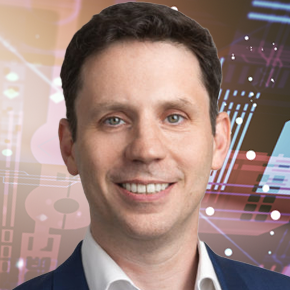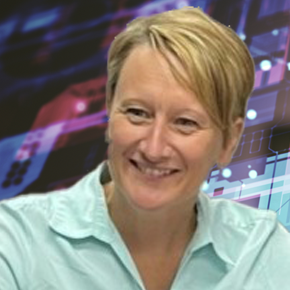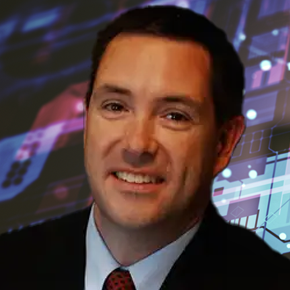August 24, 2023
Procurement Software to Reduce Cost and Carbon

Transcript
How Has the Procurement Process Changed?
The procurement process in recent years has evolved way beyond simple purchase orders and pricing tables. Today’s dynamic supply chain calls for innovative end-to-end solutions, that pair the best procurement software with an awareness of the business processes of your individual procurement team, and how they help the company achieve cost savings and profitability.
Call it strategic sourcing or innovative supplier management, the bottom line is that the procurement process must change if the manufacturing industry is to meet the challenges of today’s supply chain.
To talk about this best-in-class approach to procurement solution, I wanted to speak with Arnold Chatelain, Transformation Program Director for Signify Procurement Organization. Arnold has been critical to upgrading Signify’s procurement tools to not only meet their evolving business needs but function as a critical value-driver for the organization.
I started by asking Arnold to describe his work, and how that fits in to the overall transformation of procurement at at Signify.
What is the eProcurement?
Arnold Chatelain: I’m responsible for the digitization of procurement, sometimes called eprocurement. What does that mean? It means I need to prepare the procurement purchasing process for the future. So by introducing new procurement solution tools and new order processes, the procurement system can work better, quicker and so on.
Leah Archibald: And tell me a little bit about what it means for preparing procurement for the future. What is the current problem with order management, and how does strategic sourcing propose to solve it?
Arnold Chatelain: We don’t necessarily start from a problem. A problem is a good way to start, but it’s not necessary. We have two different approaches to improving procurement management. The first one, of course, is based on solving a problem. We made an analysis of the current procurement solution — where we are in terms of process maturity, in terms of lead time, spend analysis, etcetera. We capture data from the stakeholders in procurement and the team members outside of procurement working on the process. And we determine what are the issues with the process.
We try to analyze what is the root cause of the problem, we develop counter-measures, and we monitor the new order process to see if it is improving our baseline. That’s the first approach. But in parallel — at least at Signify — we try also to disrupt. We are working a lot on innovations. For example, innovation with supplier performance. That’s something where we are very strong. We involve our suppliers in innovation projects, because often they know better than us what needs to be changed. We work together on the procurement solution. For example, we give them a problem: we need to reduce the power consumption or the weight of the product. And we work with them on solutions to address the business needs.
With certain processes, our innovation is to automate them. This is what we did with aPriori — automated part of our procurement software solution. A lot of companies use should-cost in supplier management. In our case, we used aPriori to automate the should-cost analysis so that any team member can request a should-cost. And we streamline the spend analysis to calculate should-costs in an en-masse way. With this workflow we calculate should-cost for a lot of parts simultaneously, and we try to identify outliers. But we are innovating in other areas as well. I would say we are not traditional procurement. We try to work on current issues with the procurement process, but we try to develop new things as well.
2 Workflows for Evolving Procurement Management
Leah Archibald: I’m hearing two different workflows here. The first one is problem-solving, and I think of that as something that you have to do in order to maintain your market share. Like, to stay in the same place you have to solve your problems. And then innovation is a forward-looking approach where you have the opportunity to gain competitive advantage.
Arnold Chatelain: Exactly. You summarize it very well. I consider it is our responsibility as a leader in procurement management to stay a leader, and to act as a leader, leading the path to new things. For example, currently, we’re working to digitalize the negotiation process, so that it is not necessarily a human negotiating, but a machine is doing it for us. This makes the order process less time-consuming with the potential to increase profitability. So we are setting the path to the future.
Sustainability in Procurement Management
Leah Archibald: Where did the aPriori solution fit to your overall strategy for procurement management?
Arnold Chatelain: It is an important piece of the procurement process because should-cost is clearly an advantage when you go into negotiations with suppliers. But there is also an important place for design for manufacturing and design for sustainability. And this is where aPriori is well placed. If you design a product that is already optimized from the beginning, you don’t need procurement to negotiate. This is where I see the future — designing a product which is sustainable from the beginning.
Leah Archibald: A lot of organizations think design for manufacturability is one part of the puzzle we have to solve, and then sustainability is somewhere else, on a different part of the map. “First we have to design the product, and then we have to make sure we’re sourcing materials sustainably.” But if we can bring sustainability in from the beginning, we have the opportunity to reduce waste and make a product with less of a carbon impact before it gets to the procurement stage.
Arnold Chatelain: Exactly. Unfortunately, sometimes there is the thought that if we design for sustainability we increase the cost. But in fact, if we look at the data from several examples, increasing cost is not always the case. We can design for sustainability and reduce the cost at the same time. So we are fulfilling one of the key criteria of procurement management, which is the cost, but also a key criteria from Signify’s point of view, which is to build up sustainable products.
Examples of Procurement Reducing Cost and Carbon
Leah Archibald: Do you have examples at Signify where this is already happening? Where you’re reducing cost and reducing carbon at the same time?
Arnold Chatelain: Yes. So, for example, we were able to make the packaging much more sustainable and less costly at the same time, by removing a large part of the plastic part.
Leah Archibald: And are you involved in the packaging as the procurement team?
Arnold Chatelain: Yes.
Leah Archibald: This is an innovative way of working that a lot of companies are not doing: integrating the design team and the procurement team. Has this been an organizational challenge at Signify?
Arnold Chatelain: Yes. And it still is of course. The R&D organization at Signify is very big. We need to get everybody on board. We need to communicate a lot. Working with R&D, working with finance, working with supply chains, so more and more the project are cross-functional.
Leah Archibald: This conversation has been extremely helpful. Arnold Chatelain thank you so much for talking to us today.








